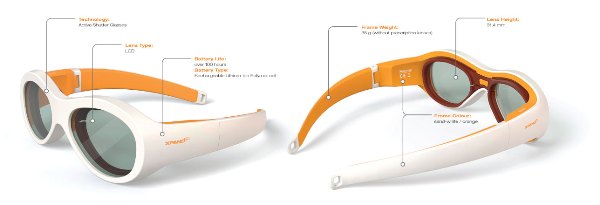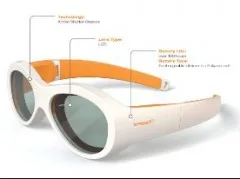Once 3D TV technology for the home disappeared from the radar, many 3D glasses suppliers faced a downturn of their business outlook and started to look for other business opportunities. One of those companies is XPand, a maker of active and passive glasses for cinema, home, educations and gaming applications.
Now they have found a new application as a treatment for amblyopia or lazy eye in young children. This disorder is normally treated by eye drops or wearing an eye patch. XPand technology is used in the Amblyz glasses which use active LCD based shutter technology to create a programmable eye patch. The shutter can be programmed to open only for a defined period of time and become opaque for the other. In addition the glasses can include prescription lenses and can enforce the use of binocular vision leading to a better treatment in the long run.

First results of a US trial will be presented at AAO 2015, the 119th Annual Meeting of the American Academy of Ophthalmology.
Researchers at the Glick Eye Institute at Indiana University recently tested the effectiveness of Amblyz glasses compared eye patches in a randomized clinical study. The study included 33 subjects with lazy eye between age 3 and 8. One group wore an adhesive patch for two hours daily. The other wore Amblyz™ occlusion glasses for 4 hours daily. In the study, the lens over the eye with better vision switched from clear to opaque every 30 seconds. After three months, both groups of children showed the same amount of improvement in the lazy eye, gaining two lines on a reading chart. This shows that the solution works and that 3D technology may have some alternate uses after all. (NH)
Analyst Comment
The ability to perceive stereo 3D as depth is intimately connected to the correct operation of both eyes in harmony. Although there has been a view that it was critical to solve this kind of problem in childhood, a book, “Fixing my Gaze”, by neuroscientist Susan R. Barry (http://www.fixingmygaze.com/) documents how in later life she trained her eyes to work together and gained an ability to see depth even though she was well into adulthood. It’s a recommended read if you are interested in steropsis. (BR)

